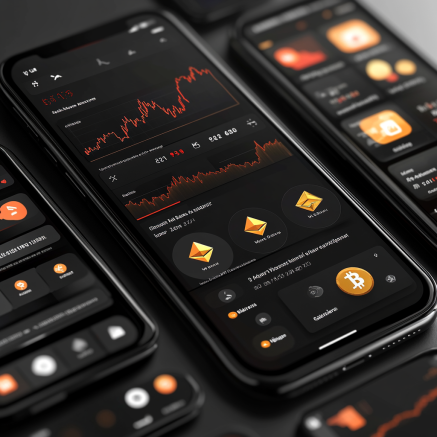I’ll admit it—I had no idea what I was diving into when I entered the crypto recruitment world. Back then, many still viewed blockchain as a ‘niche’ industry. Now, crypto dominates conversations, and UX design challenges for crypto wallets have become a central focus. I’ve seen UX designers push their limits as the crypto landscape evolves at breakneck speed. So, let’s break it down: what’s happening with crypto wallet innovations, and why are UX designers feeling the heat like never before?
When I first started recruiting for crypto projects, there was a lot of talk about decentralisation, tokenomics, and blockchain security—but almost no one was talking about UX design. Fast forward to today, and I can tell you that the most in-demand talent isn’t just your typical tech wizard, it’s the UX designer who understands how to make crypto wallets user-friendly without sacrificing security. And trust me, that’s no easy feat.
The Barrier of Entry: User Experience in Crypto Wallets
A study revealed that 70% of crypto users struggle to understand their wallets or secure them properly—staggering for technology worth billions. This puts immense pressure on UX designers to simplify wallets to the point where even a beginner could use them confidently.
Crypto wallets often come with a steep learning curve. Features like 2FA, seed phrases, and asset transfers overwhelm many users. Designers must simplify these processes without compromising security.
While wallets like MetaMask remain popular, they often confuse beginners with unclear user journeys. In contrast, Coinbase Wallet and Trust Wallet succeed by combining simplicity with robust functionality, making crypto more accessible.
Security vs. Simplicity: The UX Tug-of-War
In crypto UX design, “security” and “simplicity” are constant priorities. Wallets must be secure yet easy to use—a delicate balance. Since users control their assets without intermediaries, they bear full responsibility for security, making UX design especially challenging.
Designers must encourage robust practices, like long passwords or 2FA, without overwhelming users. Some wallets automate security with features like backups or recovery tools, while others rely on manual approaches. However, poorly executed solutions can backfire. For instance, offering to send a recovery phrase to a trusted friend might seem smart, but it creates vulnerabilities if their account is compromised.
The real challenge lies in empowering users to secure their funds without creating unnecessary complexity or risks.
Mobile-First: Designing for the Masses
Many crypto wallets still prioritize desktop, ignoring the dominance of mobile use. With most people relying on smartphones, mobile-friendly wallets are essential, especially for new users who value accessibility.
Designing for mobile isn’t just resizing screens—it requires quick transactions, intuitive navigation, and strong security. Wallets like Exodus and Zengo succeed by combining simplicity with robust features. Zengo’s biometric authentication ensures secure logins, while Exodus offers a sleek, user-friendly interface.
As crypto becomes mainstream, wallets must cater to smartphone users or risk falling behind leaders like MetaMask. Mobile-first design is no longer optional—it’s the key to wider adoption and success.
The Future of Crypto Wallet Design: What’s Next?
So, what’s next for crypto wallet innovations? We’re already seeing some exciting developments. Wallets are becoming more integrated with Web3 and DeFi platforms, making the user experience more fluid. The goal is no longer just to store assets, but to seamlessly interact with decentralised applications (dApps) and yield farming protocols directly from the wallet.
Another area to watch is the rise of multi-currency wallets that not only store crypto but also integrate NFTs and other token-based assets. This kind of functionality is still in its early stages, but as crypto wallets evolve, we’ll see even more interactivity and cross-platform integration.
For UX designers, this means one thing: stay ahead of the curve. The bar is constantly being raised, and user expectations are only going to get higher. Designing with future trends in mind while solving today’s challenges is no small feat—but that’s what makes the role of UX designers so crucial in this space.
UX Designers Are at the Forefront of Crypto Innovation
So, what have we learned here? Crypto wallet innovations are changing the game, and UX designers are the unsung heroes trying to make sense of it all. It’s a fast-paced, ever-evolving space where design meets security, and usability is often at odds with decentralisation.
From simplifying user experiences to balancing security and simplicity, UX designers in the crypto space are constantly adapting and innovating. It’s not an easy job, but someone’s got to do it—and I have a feeling the best is yet to come.




